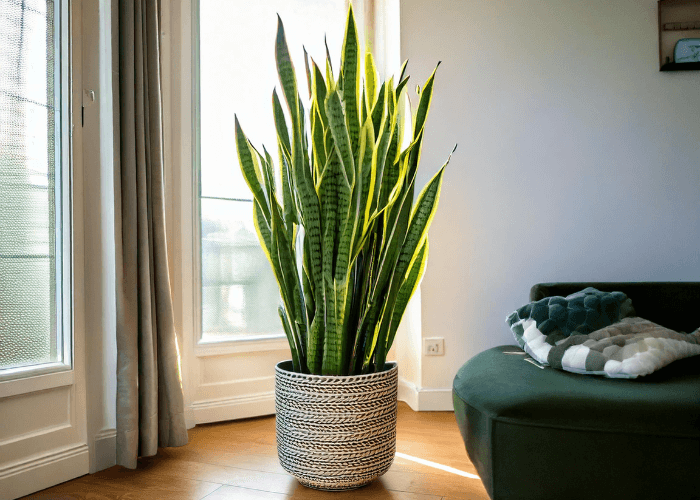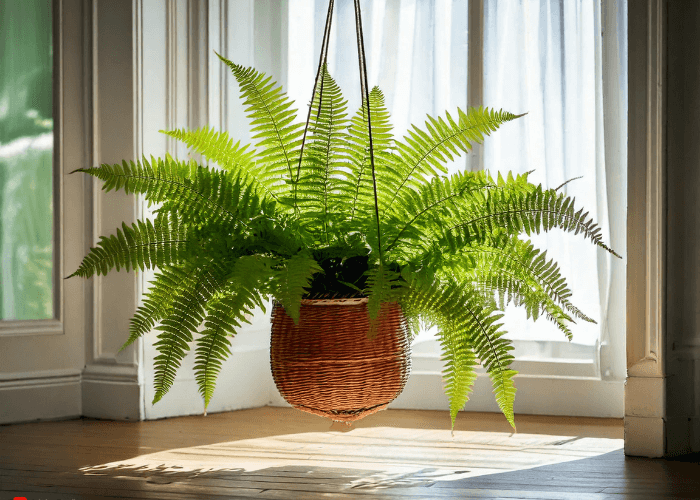We all spend a significant amount of time indoors, whether at home, in the office, or even in smaller apartments. But have you ever thought about the air quality inside these spaces? The air we breathe can contain harmful toxins, allergens, and pollutants that affect our health and well-being. Thankfully, there’s a simple, natural solution that doesn’t require expensive air purifiers or chemicals—plants for air purification.
By incorporating the right air-purifying plants into your home or workspace, you can transform your environment into a healthier, fresher place to be. In this beginner’s guide, we’ll explore everything you need to know about the best air purifying indoor plants, how they work, and which plants are most effective at improving indoor air quality. Ready to breathe easier? Let’s dive in!
Table of Contents
What Are Air-Purifying Plants?
Air purifying plants are a natural solution to improve indoor air quality. These plants work by absorbing toxins like formaldehyde, benzene, and carbon monoxide, which are often found in household products, furniture, and even cleaning supplies. Plants for air purification do this through their leaves and roots, filtering harmful substances from the air and releasing oxygen. The best part? They not only make the air cleaner but also enhance your space with their beauty and natural presence.
In fact, NASA’s Clean Air Study confirmed the effectiveness of air purifier plants in removing common indoor pollutants. This study laid the groundwork for the idea of using plants as natural air purifiers, proving that they are more than just decorative elements in your home. So, if you’re looking for a way to boost both your air quality and your mood, air purifying house plants are an excellent choice.
Benefits of Air-Purifying Indoor Plants
Health Benefits of Cleaner Air
By incorporating air purifying indoor plants into your space, you can enjoy several health benefits. For example:
- Reduced Respiratory Issues: Air-purifying plants help remove harmful chemicals that can irritate your lungs. Plants like the Peace Lily and Spider Plant are known to reduce symptoms of asthma and other respiratory conditions by absorbing toxins like formaldehyde.
- Improved Sleep Quality: Better air quality can lead to more restful sleep. Certain air purifier plants, such as the Snake Plant, improve air oxygen levels during the night, helping you sleep better and feel more energized in the morning.
- Enhanced Concentration: Studies show that plants in your environment can improve cognitive function and concentration. Whether you’re working from home or studying, having a few good air purifier plants around can boost your productivity.
Aesthetic and Emotional Benefits
It’s not just about breathing cleaner air—house plants that purify the air also contribute to your emotional well-being. The presence of greenery in your home can:
- Enhance Mood: Studies have shown that plants help reduce stress and improve mental clarity. Simply having indoor air quality plants in your living room or office can reduce feelings of anxiety.
- Improve Decor: A best air purifying indoor plant adds natural beauty to any room. From the tall, elegant Areca Palm to the trailing vines of a Pothos, these plants not only purify the air but also enhance your home’s aesthetic.
Best Air Purifying Plants for Beginners
Starting with plants for air purification doesn’t have to be complicated. Some plants are easy to care for and perfect for beginners. If you’re new to indoor gardening, consider the following:
Low-Maintenance Plants for Air Purification
1. Snake Plant (Sansevieria)

Known for its resilience, the Snake Plant is one of the best air purifying plants for beginners. It thrives in low light and requires very little water. It’s excellent at filtering toxins like formaldehyde and benzene, making it a powerful addition to any room.
2. Spider Plant (Chlorophytum comosum)

The Spider Plant is another low-maintenance option that is perfect for air purification. It’s a great plant for removing carbon monoxide and formaldehyde from the air. This plant flourishes in well-lit areas with indirect sunlight and requires minimal watering.
3. Peace Lily (Spathiphyllum)

This plant is not only beautiful with its white blooms, but it’s also incredibly effective at purifying the air. The Peace Lily can remove toxins like benzene, formaldehyde, and trichloroethylene. It’s ideal for those who are looking for an air purifier plant that also adds a touch of elegance to their space.
Best Air Purifying Indoor Plants for Small Spaces
Even if you live in a small apartment or office, you can still enjoy the benefits of air purifying house plants. Here are some great options for smaller spaces:
1. Areca Palm (Dypsis lutescens)

The Areca Palm is compact but highly effective at purifying the air. It removes toxins like xylene, toluene, and formaldehyde. It’s a perfect choice for smaller living rooms or bedrooms where space is limited.
Boston Fern (Nephrolepis exaltata)

If you have a humid room, the Boston Fern is an ideal choice. Not only does it help purify the air, but it also works as a natural humidifier, making it perfect for bathrooms or kitchens.
How to Care for Your Air Purifying House Plants
Light and Placement Tips
For your best air purifying plants to thrive, it’s important to place them in the right spots and give them the appropriate light. Most indoor air quality plants prefer indirect light, so keep them away from direct sunlight. Here are some placement tips:
- Low Light: The Snake Plant and Spider Plant thrive in low light, so they’re perfect for corners or areas with limited natural light.
- Bright Indirect Light: Plants like the Peace Lily and Areca Palm do well in bright but indirect light, so placing them near windows with sheer curtains is ideal.
Watering and Maintenance
The care for air purifying house plants varies from plant to plant, but most are relatively easy to care for. Here are some general guidelines:
- Watering: Most air-purifying plants prefer to dry out between waterings. A good rule of thumb is to water your plants once the top inch of soil feels dry to the touch.
- Cleaning: To ensure your air purifier plants are working effectively, wipe the leaves with a damp cloth every few weeks to remove dust and dirt.
- Fertilizing: During the growing season (spring and summer), you can feed your plants with a balanced liquid fertilizer every 4-6 weeks.
Using Air-Purifying Plants Effectively
How Many Plants Do You Need for Optimal Air Quality?
To get the full benefits of plants for air purification, consider the size of your space. NASA recommends having at least one plant per 100 square feet for optimal air filtering. If you want maximum air purification, mix different types of good air purifier plants, such as the Snake Plant, Peace Lily, and Spider Plant.
Combining Toxin-Removing Plants for Maximum Impact
To enhance air quality, consider grouping plants that complement each other. For example, pairing a Spider Plant with a Snake Plant can improve air quality even more, as they target different toxins.
FAQ: Common Questions About Air-Purifying Plants
Do Air-Purifying Plants Really Work?
Yes, plants for air purification have been scientifically proven to remove toxins from the air. Studies by NASA have shown that certain plants can effectively absorb pollutants like formaldehyde, benzene, and trichloroethylene.
What Are the Best Air Purifying Indoor Plants?
Some of the best air purifying indoor plants include the Snake Plant, Peace Lily, and Spider Plant. These plants are not only easy to care for, but they also work wonders in improving air quality.
Are These Plants Safe for Pets?
While many air purifier plants are safe for pets, some, like the Peace Lily, can be toxic to cats and dogs. Always check the safety of a plant before bringing it into your home if you have pets.
Conclusion: Transform Your Space With the Best Air Purifying Plants
Adding plants for air purification to your home is a simple yet effective way to improve both the air quality and the atmosphere of your living space. Whether you choose the resilient Snake Plant or the elegant Peace Lily, these plants offer natural benefits that go beyond aesthetics. By carefully selecting and caring for your air purifying house plants, you can create a healthier, happier home environment. Ready to start your journey towards cleaner air? Choose the best air purifying indoor plants for your space and enjoy the fresh, vibrant air they provide.
Take Action Today
Don’t wait for better air quality—create it! Explore our collection of air purifying plants and start improving your home’s air quality today. Happy planting!

